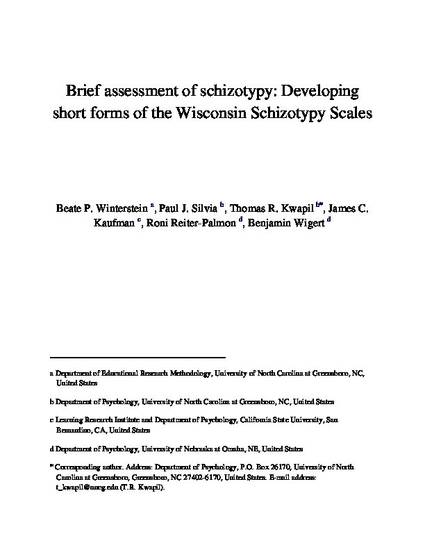
Article
Brief assessment of schizotypy: Developing short forms of the Wisconsin Schizotypy Scales
Personality and Individual Differences
Document Type
Article
Publication Date
12-1-2011
Disciplines
Abstract
The Wisconsin Schizotypy Scales—the Perceptual Aberration, Magical Ideation, Physical Anhedonia, and Revised Social Anhedonia Scales—have been used extensively since their development in the 1970s and 1980s. Based on psychometric analyses using item response theory, the present work presents 15-item short forms of each scale. In addition to being briefer, the short forms omit items with high differential item functioning. Based on data from a sample of young adults (n = 1144), the short forms have strong internal consistency, and they mirror effects found for the longer scales. They thus appear to be a good option for researchers interested in the brief assessment of schizotypic traits. The items are listed in an Appendix A.
Citation Information
Beate P. Winterstein, Paul J. Silvia, Thomas R. Kwapil, James C. Kaufman, et al.. "Brief assessment of schizotypy: Developing short forms of the Wisconsin Schizotypy Scales" Personality and Individual Differences Vol. 51 Iss. 8 (2011) p. 920 - 924 Available at: http://works.bepress.com/roni_reiter-palmon/32/

NOTICE: this is the author’s version of a work that was accepted for publication in Personality and Individual Differences. Changes resulting from the publishing process, such as peer review, editing, corrections, structural formatting, and other quality control mechanisms may not be reflected in this document. Changes may have been made to this work since it was submitted for publication. A definitive version was subsequently published in Personality and Individual Differences, Vol. 51, Issue 8 (December 2011) DOI #10.1016/j.paid.2011.07.027.